The Perpetual Partnership and the Paradigm Shift - Institutional Alliance Meets Architectural Innovation
posted: 30-Sep-2025 & updated: 02-Oct-2025
Want to share this reflection? Use this link — https://k-privateai.github.io/seminar-reflections/11 — to share!
The 11th K-PAI Forum marked a historic inflection point—not only in addressing AI's existential energy challenge but in forging the strategic alliances necessary to solve it. The perpetual partnership between K-PAI and KOTRA Silicon Valley signals a new era of international collaboration bridging Korean innovation and Silicon Valley's AI ecosystem.
The 11th Silicon Valley Private AI Forum (K-PAI), held on September 29, 2025, at KOTRA Silicon Valley’s Alaska venue, drawing close to one hundred participants eager to explore one of AI’s most existential challenge, represented far more than another successful Technical Forum. The evening began with a groundbreaking announcement that will fundamentally reshape K-PAI's institutional foundation, followed by four exceptional presentations addressing one of AI’s most existential challenges: the growing chasm between computational demand and energy supply. The palpable energy in the room—from the opening partnership ceremony through the extended networking session that refused to end ★^^★—reflected the community’s recognition that they were witnessing something genuinely historic.
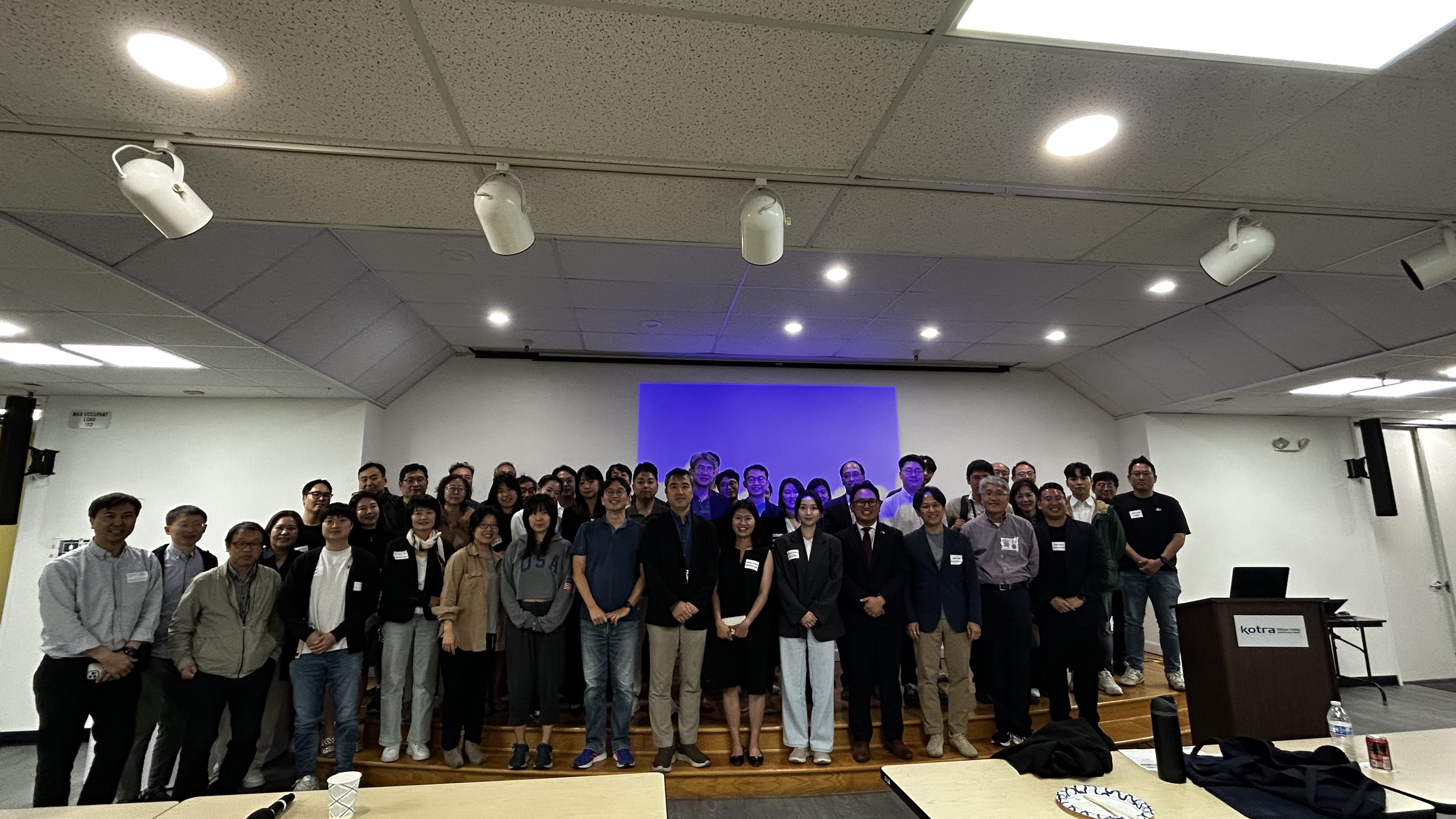
A Historic Partnership for a New Era
The Perpetual Alliance Between K-PAI and KOTRA Silicon Valley
The evening began with an announcement that will reverberate through Silicon Valley’s AI and energy communities for years to come: K-PAI and KOTRA Silicon Valley have entered into a Perpetual Partnership as Strategic Alliances. This is not a temporary collaboration or a project-based agreement—this is a foundational commitment to long-term cooperation that positions both organizations at the forefront of AI innovation and international business collaboration.
The partnership encompasses four transformative pillars:
Co-hosted Forums - A commitment to minimum twice-yearly collaborative K-PAI Forum events, ensuring sustained dialogue between Korean and Silicon Valley AI ecosystems. This guarantees that K-PAI’s platform will continue growing and evolving with institutional support.
Technical Consultation - K-PAI will provide cutting-edge technical, business, and entrepreneurial consultation to KOTRA SV, positioning the organization as a bridge between Korean (and non-Korean) companies seeking Silicon Valley partnerships and the expertise they need to succeed.
Network Access - KOTRA SV will share its extensive academic and industry networks with the K-PAI community, opening doors that have historically been difficult for individual researchers and entrepreneurs to access.
Event Spaces - KOTRA SV provides premium venue access for K-PAI events and activities, solving one of the persistent logistical challenges facing community organizations while ensuring professional settings for world-class discussions.
This partnership exemplifies K-PAI’s vision of creating synergistic relationships that amplify innovation while fostering international collaboration. The alliance recognizes that the challenges facing AI—particularly the energy crisis explored throughout the evening—cannot be solved by any single country, company, or community. Both Korean innovation capacity and Silicon Valley’s AI leadership must converge to address the unprecedented scale of infrastructure required for AI’s continued growth.
Sunghee Yun, K-PAI’s founder and leader, and Oh Hyoung Kwon, Managing Director of KOTRA Silicon Valley, jointly announced this partnership in a ceremony that set the tone for the entire evening. The symbolism was profound: at a forum dedicated to solving AI’s power challenge, K-PAI was simultaneously demonstrating how to build the institutional power necessary to tackle such massive problems—through strategic alliances that combine complementary strengths.
The partnership also reflects a maturing understanding within the AI community that sustainable innovation requires institutional foundations, not just brilliant individuals working in isolation. K-PAI has evolved from an informal gathering of AI enthusiasts into a recognized platform with the organizational partnerships necessary to drive real change.
The Energy Imperative - Four Expert Perspectives
Jae-Won Chung - Power and Energy as First-Class AI Design Metrics
Jae-Won Chung, a Ph.D. student from the University of Michigan and leader of the ML.ENERGY Initiative, opened the technical presentations with a comprehensive examination of why power and energy must become primary considerations in AI system design rather than afterthoughts. He opened the presentation mentioning that the unprecedented scale of modern AI workloads have led to unprecented demand for compute, power, and energy.
Chung outlined the three challenges present today in the context of AI, power, and energy. First is getting the power to supply to large capacity datacenters, which takes multiple years of planning, approval, and construction. The second challenge is managing the energy cost, which presents complex dynamics based on the electricity supply and sustainability committment structure of the said company. Finally, with extremely large scale AI training, properly managing the power consumption of such jobs lead to grid infrastructure stability challenges.
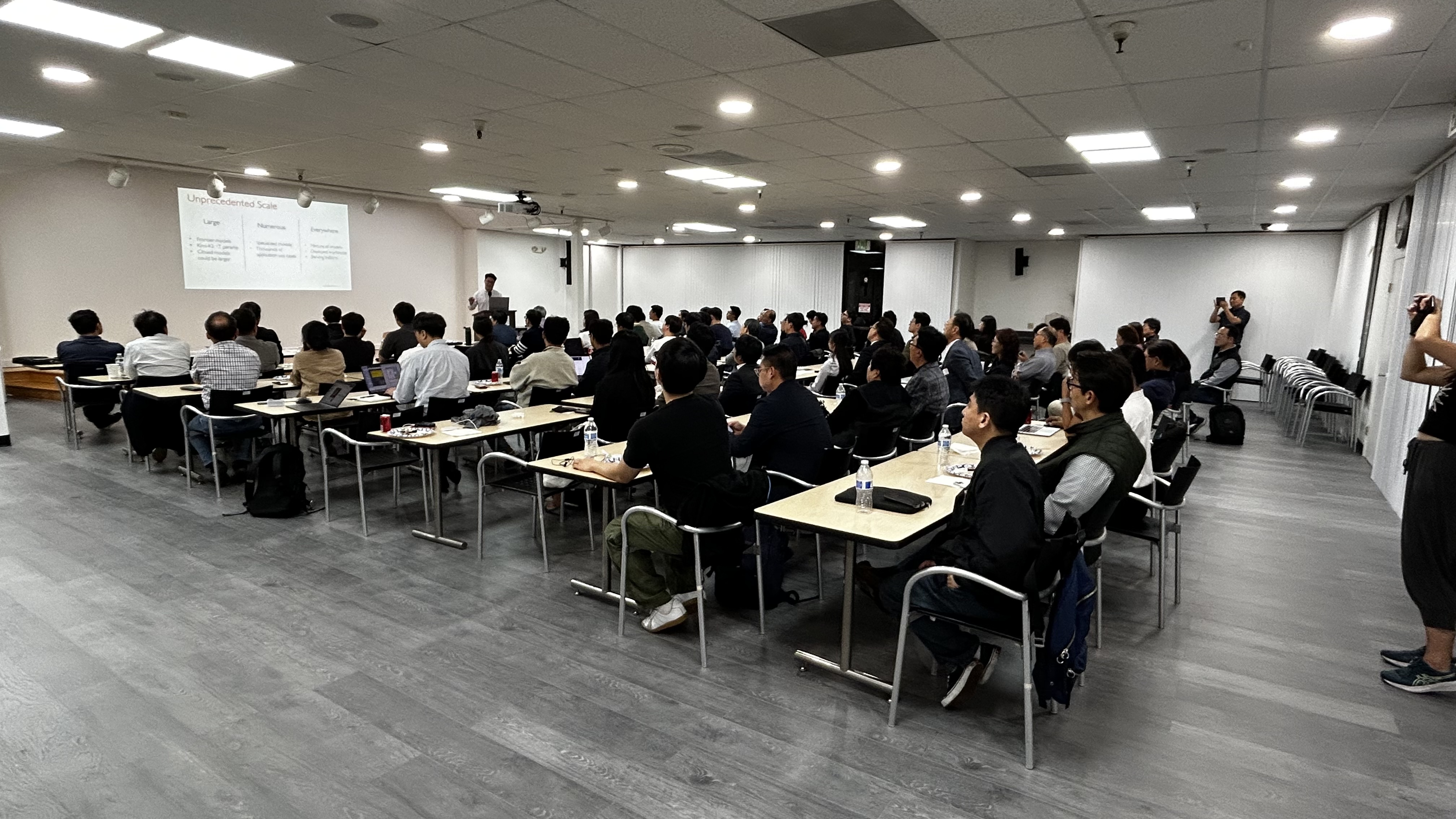
The presentation’s practical contributions included detailed demonstrations of the Zeus framework for measuring and optimizing AI energy consumption, along with compelling visualizations of where energy actually goes during large model training. Chung revealed that significant “energy bloat” exists in current AI training pipelines—with his research showing potential for 30% energy reduction through better pipeline scheduling and power management. His work on the ML.ENERGY Leaderboard, which systematically measures inference energy consumption across models and hardware, provides the community with essential tools for making energy-aware architectural decisions.
Jieul Jang - How Silicon Valley and Energy Companies Must Both Win for AI to Scale
Jieul Jang, Senior Director at Hanwha Qcells, argued that the AI industry faces an unavoidable reality: massive renewable energy deployment represents the only viable path forward at the required speed and scale. His central thesis—that efficiency gains and energy capacity expansion must both succeed for AI to scale—challenged Silicon Valley’s tendency to view technical optimization as the primary solution to the energy challenge.
Jang’s presentation excelled at making abstract energy numbers visceral and comprehensible. He demonstrated that a single AI server rack consuming 120kW equals 38 Tesla Model Y charges per day, providing attendees with an intuitive grasp of the energy scale involved. He then showed that even with Nvidia Blackwell’s impressive 2.5x efficiency improvement, AI energy consumption will still grow from 176 TWh today to 400-450 TWh by 2028—an increase roughly equivalent to adding Texas-sized electricity demand to the grid. The brutal math: efficiency growing 2-3x while demand grows 10x means we still need at least 2x grid capacity expansion even under optimistic scenarios.
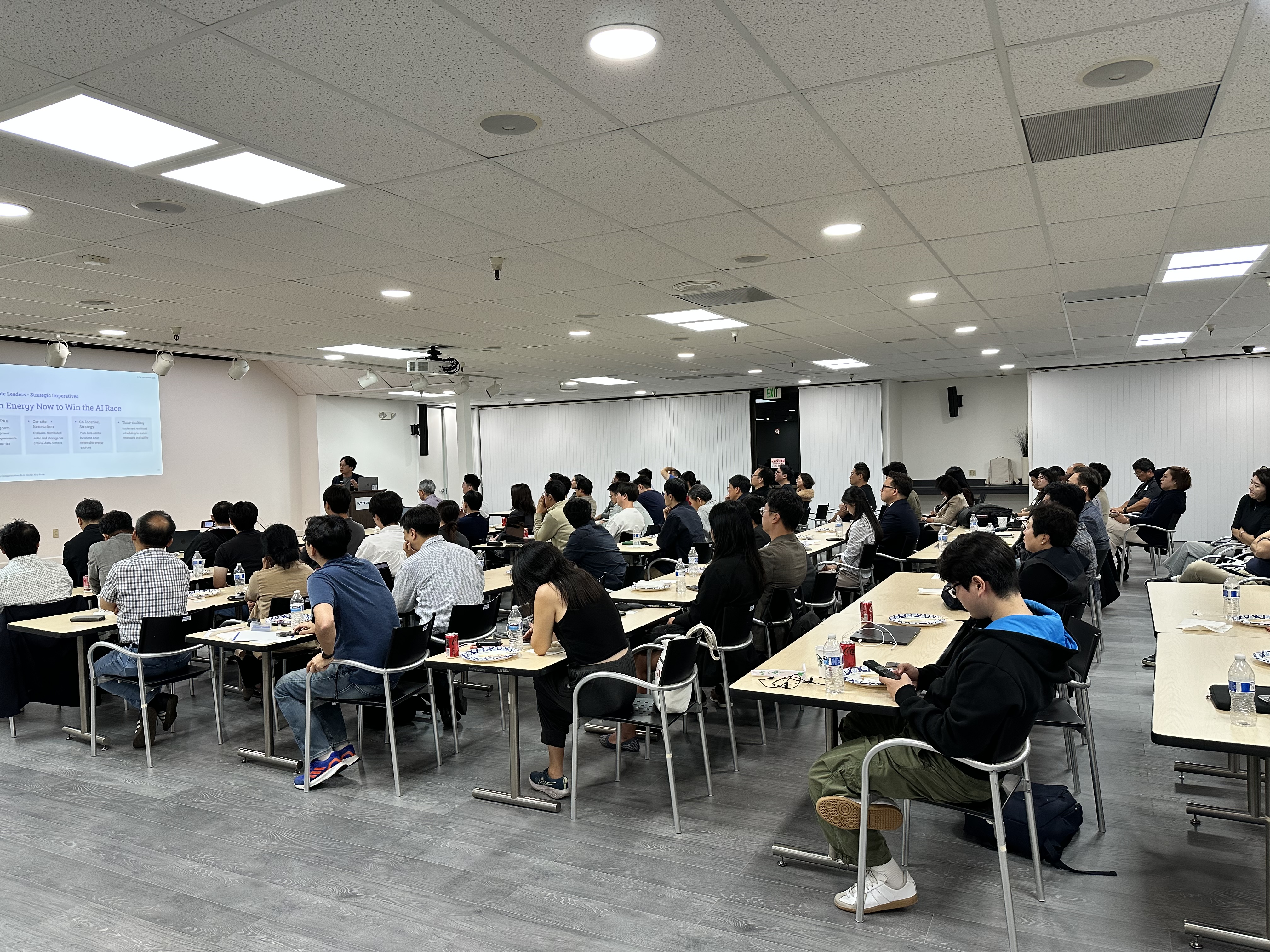
The most compelling aspect of Jang’s argument centered on deployment speed. He systematically demonstrated that natural gas plants require 7-10 years from decision to operation, with current gas turbine delivery times alone stretching 5-7 years due to manufacturing constraints. Nuclear plants require 10+ years. In stark contrast, solar plus storage projects can achieve 18-month deployment timelines from decision to grid connection—the only technology that matches AI’s 2-3 year development cycles. Combined with cost advantages (new solar is now cheaper than running existing coal plants), Jang presented renewables not as an idealistic preference but as the pragmatic solution to an existential constraint.
Brian Shin - Challenges of Modern Power Grid Operations
Brian Shin from PG&E provided a comprehensive examination of the operational challenges facing modern power grids, drawing on his experience at one of California’s major utilities. His presentation explored the complexities of managing blackout prevention and restoration procedures, renewable energy integration with various inverter technologies, and the intricacies of power market operations. Shin highlighted the critical technical distinctions between Grid Tie (GT), Grid Forming (GFM), and Grid Following (GFL) inverters, referencing historical incidents from 2016-2017 in Southern California where solar installations tripped before grid relays, necessitating the introduction of trip-delay mechanisms to inverters.
A particularly illuminating aspect of Shin’s presentation was his analysis of the 2025 Iberia Peninsula blackout, which he attributed to inverter control failures and the absence of Grid Forming (GFM) inverters. His discussion of power market operations distinguished between ancillary service markets focused on power balance and frequency regulation versus energy service markets concerned with transmission congestion and price volatility. The dramatic transformation of California’s energy landscape was evident in his data showing battery storage output increasing tenfold from 500MW in April 2021 to over 5,000MW in April 2024, demonstrating how Battery Energy Storage Systems (BESS) are fundamentally reshaping grid operations.
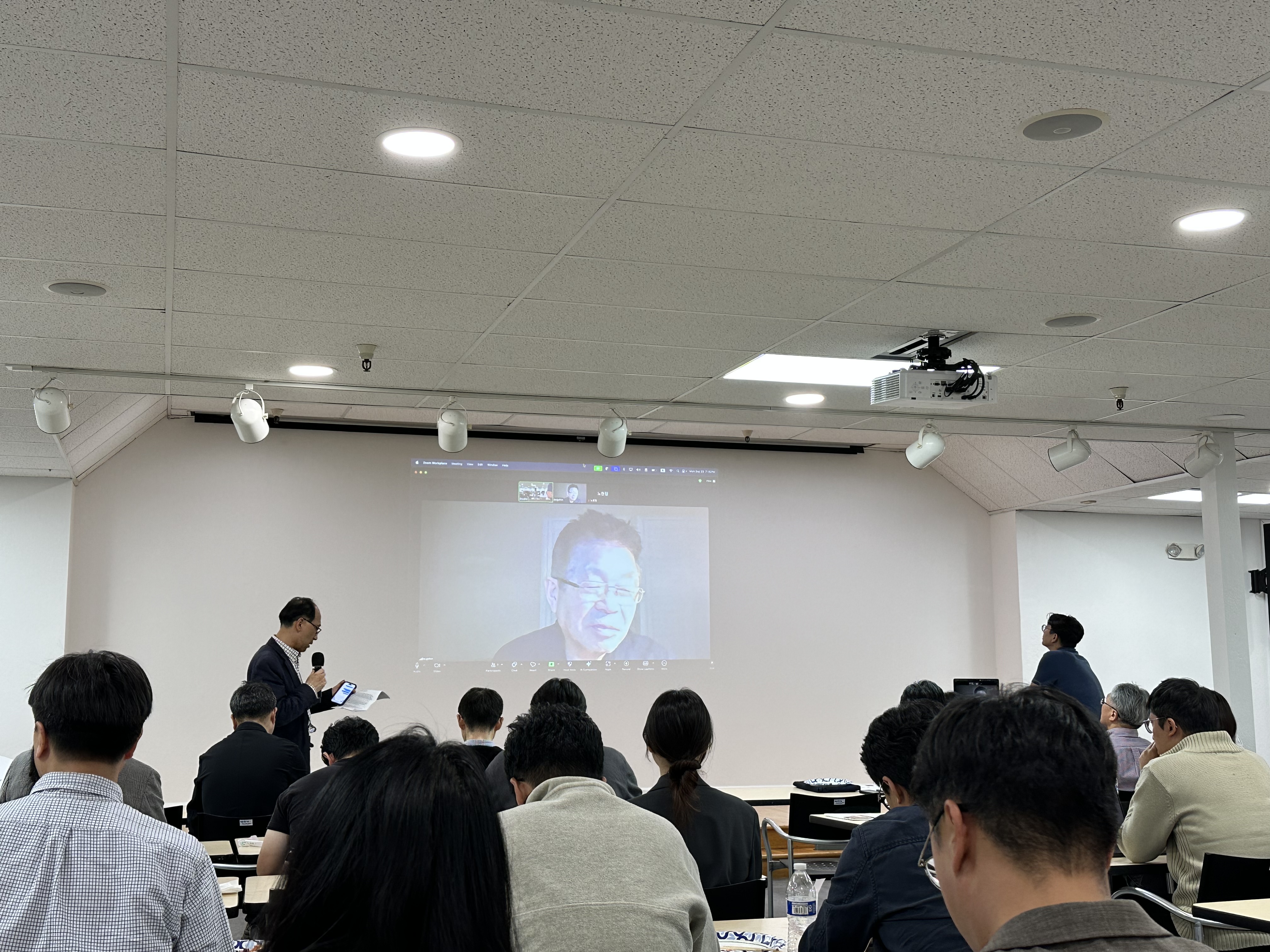
Shin’s presentation examined real-world security events, including Australia’s Hornsdale BESS response to a “Large System Security Event” on August 25, 2018, where the battery system responded within 5 seconds to stabilize grid frequency. He detailed how California’s August 14, 2020 Stage 3 emergency, which resulted in two load shedding events, could potentially have been avoided through strategic peak shaving using battery storage. His technical discussion of BESS operations explored optimal transformer sizing (1.5 to 2 times BESS capacity) and the dual revenue opportunities from both load balancing during high ramping periods and Frequency Control Ancillary Services (FCAS) for grid disturbances, positioning battery storage as potentially the main business opportunity for modern grid operators.
Seong Choi - The Control Room of the Future
Seong Choi from the National Renewable Energy Laboratory (NREL) presented a visionary yet practical roadmap for transforming grid control rooms through the integration of artificial intelligence and digital twin technology. Choi contextualized his work within the broader challenge of managing what has been called “the world’s largest machine”—the U.S. transmission and distribution system, which the National Academy of Engineering recognized as part of the greatest engineering achievement of the 20th century. His presentation provided sobering statistics: 5,840 conventional power plants over 20MW, 30,000 transmission substations above 100kV, 526,833 miles of transmission lines, approximately 2.7 million transmission towers, and an estimated 170 million wood poles comprising the North American grid infrastructure.
Choi’s historical analysis of cascading outages—from the 1965 Northeast blackout affecting 30 million people that collapsed in 13 minutes to the 2011 Western US event affecting 2.7 million customers—illustrated the persistent vulnerability of interconnected systems. His presentation distinguished between planned outages for vegetation management and equipment maintenance versus forced outages from faults, tornadoes, and lightning, noting that California ISO alone processes 15,000-20,000 outage records annually. The outage coordination process he described—from transmission operator submission through ISO review, equipment mapping, and contingency analysis—demonstrates the complex manual workflows that AI and digital twins could potentially automate and optimize.
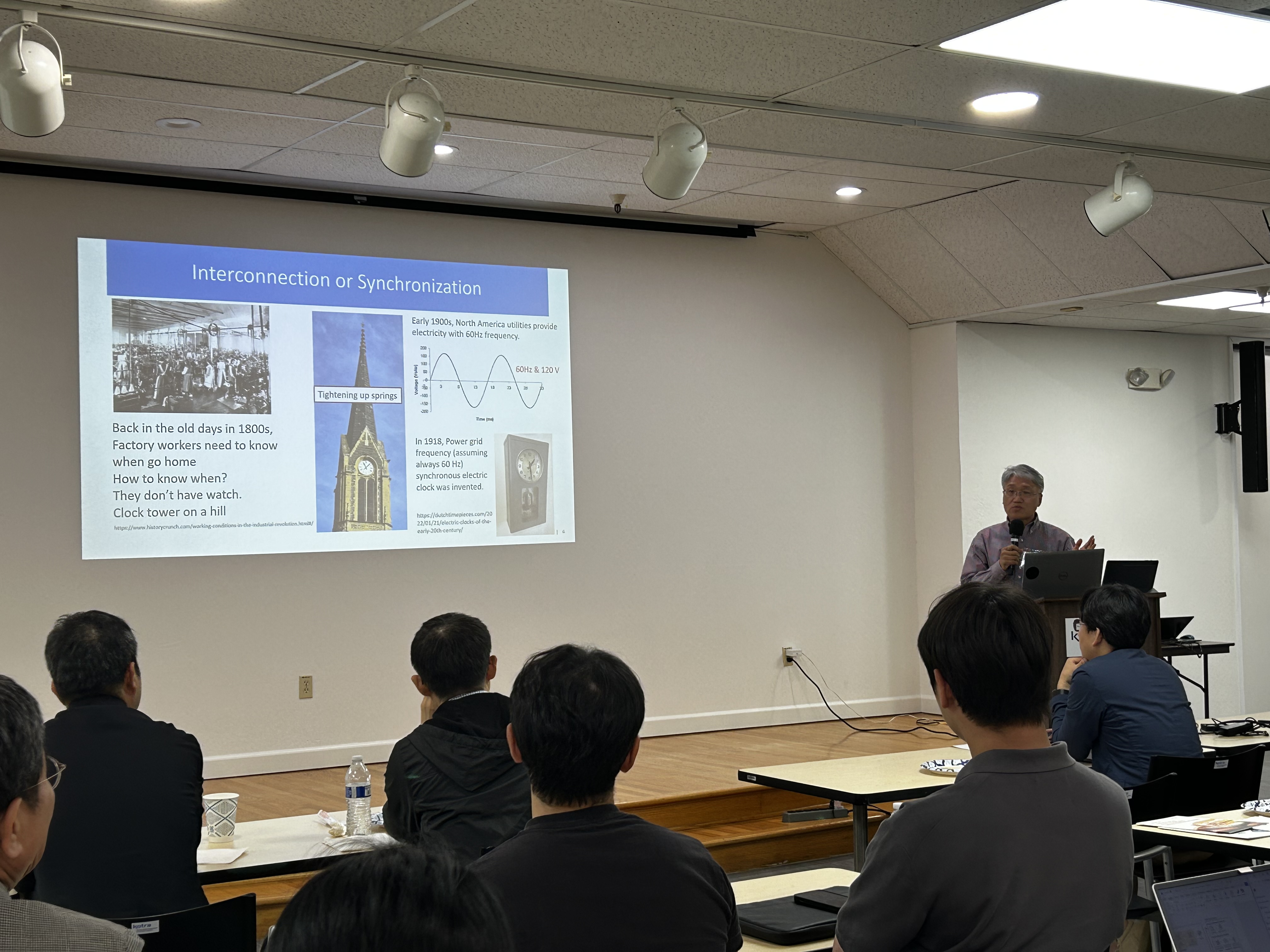
The centerpiece of Choi’s presentation was NREL’s eGridGPT platform, which integrates generative AI with digital twin technology to create what he termed “trustworthy AI” for grid operations. His vision traced the evolution from past analog control rooms through present digital systems to a future of comprehensive digital transformation, with eGridGPT designed to be cyber-secure, NERC compliant, and capable of running on-premise to satisfy critical infrastructure protection requirements. Choi demonstrated specific use cases including automated outage studies that can evaluate multiple scenarios in 30 minutes, integration of disparate tools to reduce display complexity, and processing of alarm floods exceeding 1,000 alarms per hour—showcasing how AI can transform previously manual or impossible analytical tasks into routine operations while maintaining the essential role of human operators in final decision-making.
The Atmosphere - Enthusiasm That Wouldn’t End
Throughout the evening, the Alaska conference room buzzed with extraordinary energy and engagement. The historic partnership announcement generated immediate and sustained discussion among attendees, who recognized they were witnessing K-PAI’s evolution into something larger and more enduring than a periodic gathering. The generosity of UClone and MangoBoost in sponsoring the reception created a welcoming atmosphere that encouraged meaningful connections during the networking hour, with premium refreshments facilitating conversations that would continue throughout the evening.

The technical presentations maintained intense audience focus, with attendees asking sophisticated questions that demonstrated deep engagement with the material. The diversity of perspectives—spanning academic research, renewable energy industry, utility operations, and national laboratory research—created a comprehensive view of the AI-energy challenge from multiple angles. Attendees repeatedly noted the exceptional quality of the speaker lineup and the practical applicability of the insights shared.

Most remarkably, the networking session following the formal presentations refused to end. Small groups clustered throughout the venue, with animated discussions continuing well past the scheduled 8pm conclusion. Energy professionals engaged with AI researchers about workload scheduling possibilities. Entrepreneurs explored potential collaborations in energy storage. Utility engineers discussed AI implementation strategies with software developers. The conversations were so intense and productive that, as has become a recurring pattern at K-PAI forums, the organizers once again had to actively encourage attendees to leave the conference room—a task made more difficult by the fact that nobody wanted to miss out on the valuable connections being forged.
Emerging Themes and Technical Insights
The Two-Front War Reality
A central theme emerging from the evening’s presentations was the inescapable reality that AI’s energy challenge requires simultaneous progress on both efficiency and capacity. Chung’s rigorous analysis demonstrated that efficiency improvements are real and continuing—but simply cannot keep pace with demand growth. Jang’s renewable deployment roadmap showed that massive capacity expansion is possible—but requires unprecedented acceleration of deployment timelines. The two-front war metaphor captures the essential insight: betting exclusively on either efficiency or capacity expansion will fail. Success requires excellence on both fronts simultaneously.
This realization aligns perfectly with concerns I raised in my recent blog post, “MIT-Invented Liquid Neural Networks - A Game-Changer for the Future of LLMs”, where I explored the unsustainable trajectory of AI’s energy consumption. The forum’s discussions validated my observation that even with optimistic projections for technologies like nuclear fusion becoming commercially viable by 2035-2050, we cannot wait for future energy breakthroughs. The mathematical reality presented by both Chung and Jang—that demand grows 10x while efficiency improves only 2-3x—demands immediate action on both fronts.
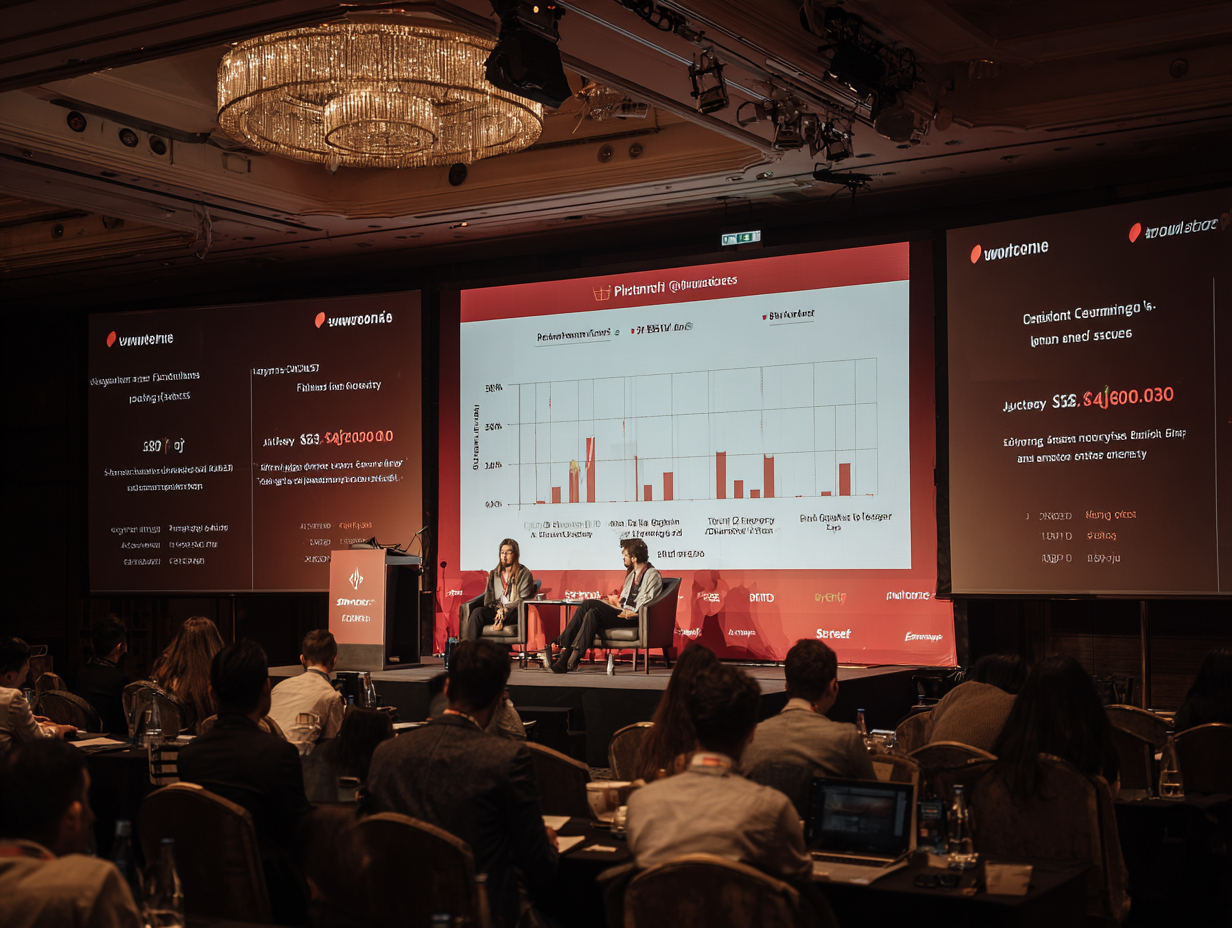
The two-front war has profound implications for how organizations approach energy strategy. Technology companies cannot assume that next-generation chips will solve the energy problem without also securing long-term power supply. Energy companies cannot assume that traditional deployment timelines are adequate for AI’s accelerating demand. The companies and communities that will succeed in the AI era are those that develop integrated strategies addressing both optimization and capacity expansion with equal seriousness.
Architectural Innovation: The Missing Third Front
While the forum focused primarily on hardware efficiency (Chung) and capacity expansion (Jang), there exists a complementary dimension that deserves equal attention: fundamental architectural innovation at the model level. In my blog post on Liquid Neural Networks (LNNs), I highlighted MIT spinoff Liquid AI’s breakthrough non-Transformer architecture that addresses energy consumption at its algorithmic roots rather than through incremental hardware or infrastructure improvements.
The Transformer architecture, despite its revolutionary capabilities, fundamentally requires constant toggling of GPU circuits during attention mechanisms—an inherent energy cost that persists regardless of hardware efficiency gains. Liquid Neural Networks challenge this paradigm by eliminating the Transformer’s attention mechanism entirely, achieving what the forum discussions suggested was impossible: dramatic energy reduction without sacrificing performance. According to the research I examined, LNNs deliver results with significantly lower energy consumption and notably faster inference speeds compared to Transformer-based models.
This architectural dimension represents what might be called the “third front” in AI’s energy war. While Chung’s work optimizes existing architectures and Jang’s strategy expands energy supply, architectural innovations like LNNs fundamentally reduce the energy required per unit of computation. The combination of all three approaches—hardware optimization, capacity expansion, and architectural innovation—offers the most promising path toward sustainable AI scaling.
The forum’s emphasis on specialized, domain-specific models (as discussed in the context of medical charting applications) aligns perfectly with the LNN approach. As I noted in my blog, most use cases don’t require the full linguistic capabilities of general-purpose LLMs. Liquid Neural Networks’ architecture is particularly well-suited for creating lighter, task-specific models that can deliver specialized performance with a fraction of the energy footprint. This convergence of insights—from both the forum presentations and architectural innovation research—suggests that the future of AI will be characterized by diverse model architectures optimized for specific domains rather than universal Transformer-based systems for all applications.
The Speed Imperative
The forum crystallized growing recognition that deployment speed has become as critical as technical capability. Jang’s stark comparison of deployment timelines—18 months for solar versus 7-10 years for gas versus 10+ years for nuclear—reveals why renewable energy has become the pragmatic choice rather than merely the idealistic one. When AI model development cycles run 6 months and chip generations turn over every 2 years, energy solutions requiring a decade to deploy simply cannot match the pace of demand growth.
This speed imperative applies equally to architectural innovation. The Transformer architecture has dominated for years, but its energy characteristics make it increasingly untenable at scale. The rapid commercialization of alternatives like Liquid Neural Networks—moving from MIT research to production deployment in just a few years—demonstrates that architectural innovation can match or exceed the deployment speed of renewable energy infrastructure. Organizations that wait for “perfect” solutions in any of these three areas (hardware, infrastructure, architecture) will find themselves constrained by preventable energy shortages.
The speed imperative is driving fundamental changes in corporate strategy. The hyperscaler companies are pursuing direct renewable procurement through virtual PPAs rather than waiting for utilities to expand capacity. Tech companies are evaluating data center locations based on proximity to renewable energy sources rather than traditional factors alone. Similarly, forward-thinking AI companies are experimenting with non-Transformer architectures rather than assuming the Transformer paradigm is permanent. Speed has become a first-order constraint rather than a secondary consideration across all three fronts.
The Grid as Bottleneck
Shin’s operational perspective and Choi’s AI-enhanced control room vision together highlighted an often-overlooked constraint: even with both efficiency improvements and renewable capacity expansion, the grid itself represents a potential bottleneck. The existing transmission infrastructure was not designed for either the distributed generation patterns of renewable energy or the concentrated loads of hyperscale data centers. The $180 billion required for transmission upgrades alone—separate from generation capacity—illustrates the magnitude of the infrastructure challenge.
This grid modernization requirement creates both challenges and opportunities. The challenge lies in coordinating improvements across generation, transmission, distribution, and demand management—requiring collaboration between technology companies, utilities, regulators, and grid operators. The opportunity lies in deploying AI and advanced software systems to make existing grid infrastructure more capable and efficient while new physical infrastructure is built. Choi’s eGridGPT demonstration suggested how AI can help extract more capability from current infrastructure during the extended period required for physical upgrades.
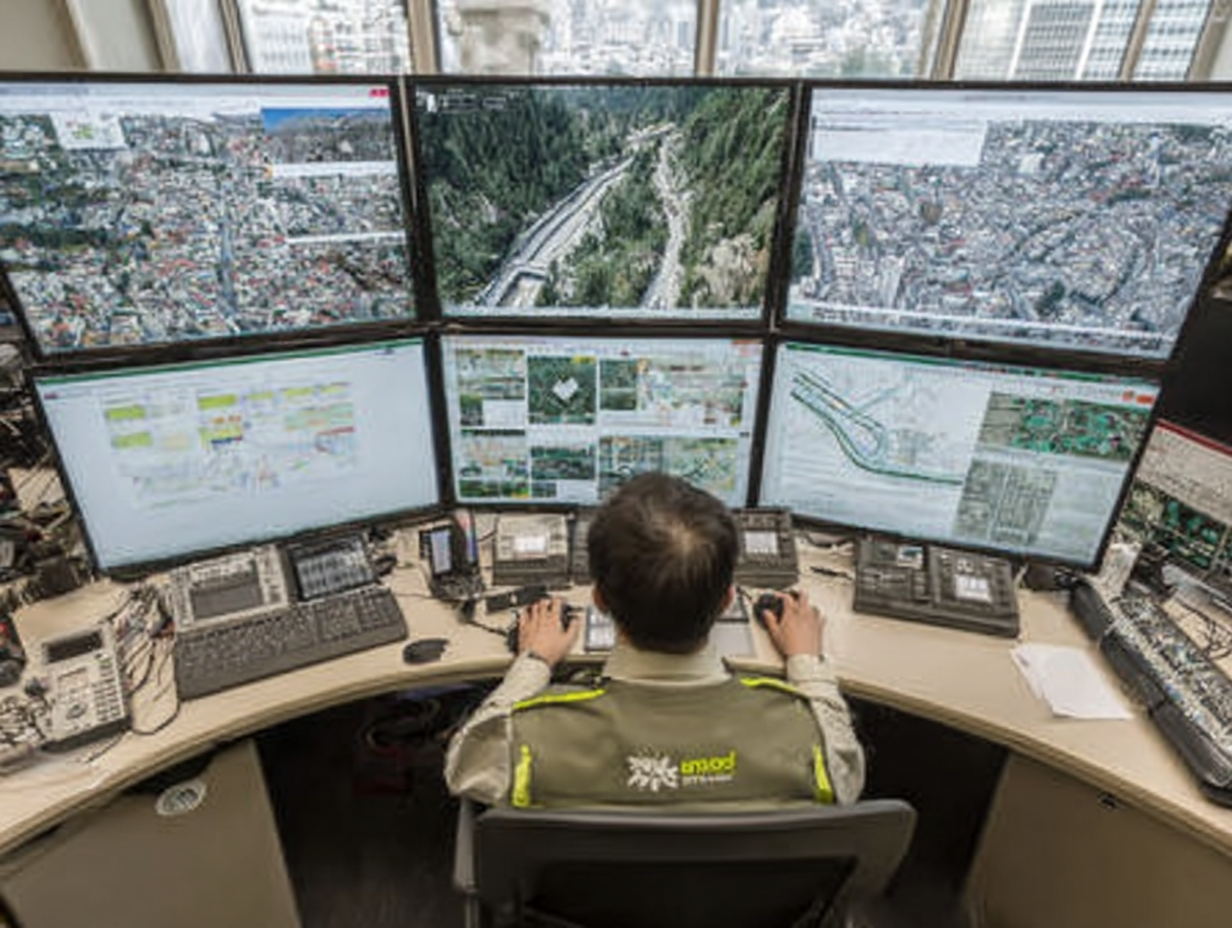
Interestingly, architectural innovations like Liquid Neural Networks could ease grid pressure by reducing peak power demands. If LNNs can deliver comparable results with significantly lower instantaneous power draw, data centers using these architectures would place less strain on local grid infrastructure. This creates a virtuous cycle: more efficient architectures reduce grid stress, enabling faster deployment of AI capacity within existing infrastructure constraints while new grid capacity comes online.
The Partnership Model
The perpetual K-PAI–KOTRA partnership announced at the Forum’s opening represents a broader theme – complex challenges require institutional collaboration rather than isolated efforts. The energy challenge facing AI cannot be solved by technology companies alone, energy companies alone, or policymakers alone. It requires sustained collaboration across traditionally separate domains, with institutions building lasting relationships rather than episodic interactions.
This partnership model has implications beyond K-PAI’s specific collaboration with KOTRA SV. It suggests how professional communities, trade organizations, research institutions, and private sector companies might create more effective collaboration mechanisms. The perpetual nature of the partnership—with concrete commitments around event co-hosting, industrial and academic collaboration, consultation, network sharing, and venue access—provides a template for how organizations can move beyond informal cooperation toward genuine institutional integration.

The collaboration between MIT research (Liquid AI), hardware manufacturers (Nvidia, AMD), renewable energy companies (Hanwha Qcells), utilities (PG&E), and national laboratories (NREL) exemplifies this partnership imperative. No single organization possesses all the expertise required to solve AI’s energy challenge. Success requires bridging academic research, commercial deployment, infrastructure development, and operational excellence—exactly the kind of cross-sector collaboration that K-PAI’s partnership with KOTRA SV is designed to facilitate.
Key Takeaways for AI Community
Energy as Competitive Advantage
The forum reinforced that energy access and efficiency are becoming genuine competitive advantages in AI development rather than merely operational considerations. Organizations that secure long-term renewable power agreements now will have strategic advantages over competitors facing power constraints later. Companies that achieve superior energy efficiency—whether through hardware optimization, architectural innovation like Liquid Neural Networks, or both—can train larger models within power budgets or deploy more inference capacity with available supply. Energy strategy is evolving from a facilities management concern to a core element of technical and business strategy.
The competitive dimension extends to architectural choices. Organizations that diversify beyond Transformer-based architectures to include energy-efficient alternatives will have greater deployment flexibility and lower operational costs. As I noted in my LNN blog post, the speed difference alone—instant results versus token-by-token generation—represents a qualitative user experience advantage beyond just energy savings. Companies that recognize architecture as a competitive lever, not just a technical constraint, will capture disproportionate value in energy-constrained markets.
The Renewable Reality
Jang’s presentation in particular challenged Silicon Valley’s tendency to view multiple energy options as equally viable paths forward. The speed imperative, combined with cost advantages and manufacturing scalability, makes renewable energy the pragmatic choice for near-term capacity expansion regardless of one’s position on climate policy. While nuclear energy may play important roles in longer-term baseload capacity and existing natural gas plants will continue operating, the energy that can actually be deployed fast enough to match AI’s growth timelines comes primarily from solar and wind with battery storage.
This renewable reality should inform architectural decisions as well. Renewable energy’s variability—the famous “duck curve” problem—creates natural synergies with flexible AI workloads. Training jobs can be scheduled during periods of peak solar generation. Inference workloads using energy-efficient architectures like LNNs can operate economically even during lower-generation periods. The combination of renewable energy infrastructure and energy-aware AI architectures creates opportunities for optimization impossible with either approach alone.
Measurement Enables Optimization
Chung’s emphasis on rigorous energy measurement—through tools like Zeus and the ML.ENERGY Leaderboard—highlights a foundational principle: optimization requires measurement. The AI community’s historical focus on computational metrics (FLOPs, latency, throughput) without comparable attention to energy metrics has left significant efficiency gains unrealized. Organizations that integrate energy measurement into their standard performance evaluation and optimization workflows will discover opportunities invisible to those focused exclusively on computational metrics.
This measurement imperative extends to architectural comparisons. The ML.ENERGY Leaderboard should expand to include non-Transformer architectures like Liquid Neural Networks, enabling direct energy comparisons across architectural paradigms rather than just across Transformer variants. Such comprehensive measurement would accelerate adoption of genuinely energy-efficient architectures by making their advantages quantitatively visible to decision-makers. Without rigorous measurement spanning all three fronts—hardware, infrastructure, and architecture—we risk optimizing only the dimensions we measure while missing larger opportunities.
Architectural Diversity as Sustainability Strategy
The forum’s discussions on specialized models for specific domains (medical charting, legal document processing, etc.) suggest a natural evolution toward architectural diversity rather than universal Transformer dominance. This diversity represents not just technical optimization but a sustainability strategy: different architectures optimized for different tasks, each achieving maximum energy efficiency for its specific domain.
Liquid Neural Networks exemplify this principle. Rather than attempting to match Transformers’ general-purpose capabilities while reducing energy consumption, LNNs explore a fundamentally different architectural paradigm optimized for specific characteristics (continuous dynamics, temporal reasoning, edge deployment). As organizations develop domain-specific AI solutions, they should evaluate whether Transformer architectures are genuinely optimal for their use case or whether alternatives like LNNs, state space models, or hybrid approaches might deliver superior energy efficiency without sacrificing performance.
This architectural diversity approach aligns with both technical and business realities. Technically, no single architecture can be optimal for all tasks across all deployment contexts. Economically, energy costs increasingly dominate AI deployment budgets, making architecture selection a critical business decision rather than purely a technical choice. Organizations that embrace architectural diversity as a strategic advantage rather than treating it as technical complexity will be better positioned for sustainable AI scaling.
Operational Complexity Matters
The perspectives from Shin and Choi reminded the audience that deploying energy solutions in real-world operational environments involves challenges that don’t exist in theoretical analyses. Grid operators must maintain reliability standards while integrating variable renewable generation. Control rooms must process overwhelming data streams while making time-critical decisions. AI systems intended to enhance grid operations must work within existing regulatory frameworks and operational constraints. Entrepreneurial energy solutions that ignore operational complexity will fail regardless of their technical elegance.
This operational reality applies equally to architectural innovation. Liquid Neural Networks or other alternative architectures must integrate with existing MLOps toolchains, development workflows, and deployment infrastructure. Organizations cannot simply swap architectures without considering training pipelines, inference serving, monitoring, and maintenance implications. The most energy-efficient architecture in isolation means nothing if operational complexity makes it impractical to deploy. Successful architectural innovation must balance theoretical energy efficiency with operational feasibility—exactly the same constraint facing renewable energy deployment.
Areas for Future Exploration
While the forum provided comprehensive coverage of the AI-energy challenge, several areas warrant deeper investigation in future K-PAI events!
Architectural Innovation and Energy Economics
The forum focused primarily on hardware efficiency and infrastructure capacity, but future events should explore architectural alternatives to Transformers in depth. How do different architectures (Liquid Neural Networks, state space models, mixture-of-experts, hybrid approaches) compare across energy consumption, training time, inference latency, and task-specific performance? What economic models support architectural diversity versus Transformer monoculture? Can we develop standardized benchmarks that measure energy efficiency across architectural paradigms rather than just within them?
My exploration of Liquid Neural Networks suggests that architectural innovation may offer the most dramatic near-term gains in energy efficiency—potentially exceeding what’s achievable through hardware or infrastructure optimization alone. Yet the AI community lacks systematic frameworks for evaluating and comparing architectural alternatives on energy dimensions. Future K-PAI forums could bring together researchers working on alternative architectures with energy economists and infrastructure planners to develop comprehensive models of how architectural choices cascade through entire AI deployment ecosystems.
International Deployment Models
The discussion focused primarily on US energy infrastructure and regulatory frameworks, but AI development and deployment is fundamentally global. How do energy constraints and solutions differ across regions? What can Silicon Valley learn from energy strategies in Asia, Europe, and other markets facing similar AI scaling challenges, and vice versa? How do different regulatory environments enable or constrain architectural innovation and renewable energy deployment?
Korea, for instance, has significant nuclear baseload capacity combined with aggressive renewable deployment targets—a different energy mix than California’s renewable-dominated approach. How do these different energy contexts influence optimal AI architecture choices? Should organizations developing AI for Korean deployment prioritize different architectural characteristics than those targeting US markets? What role can K-PAI’s partnership with KOTRA SV play in facilitating knowledge exchange around regionally-optimized AI energy strategies?
Long-Duration Storage Economics
While speakers discussed the need for 12+ hour storage to solve the overnight inference problem, the economic viability of these longer-duration storage technologies remains uncertain. What cost thresholds must be achieved for different storage durations? How do different technologies (lithium-ion, iron-air, flow batteries, mechanical storage) compare for various duration requirements?
The intersection between storage economics and architectural innovation deserves particular attention. If Liquid Neural Networks or similar architectures can deliver comparable inference quality with significantly lower power draw, they effectively extend the useful duration of given battery capacity. A 12-hour battery becomes an 18-hour battery when serving LNN inference instead of Transformer inference (assuming proportional energy reduction). This architectural-infrastructure synergy could dramatically improve storage economics while we wait for long-duration storage costs to decline.
Demand Response Sophistication
The Forum touched on workload time-shifting for AI training but didn’t deeply explore more sophisticated demand response strategies. Could AI inference itself become more flexible in its energy consumption? What mechanisms might enable market-based demand response for AI workloads?
Grid-Scale AI Coordination
Choi’s presentation on AI-enhanced control rooms focused on utility operations, but what about AI systems coordinating across utilities, regions, and even internationally? Could AI-to-AI communication enable more sophisticated grid management at larger scales?
Energy Justice and Access
The Forum’s focus on serving hyperscale AI needs raises questions about equitable energy access. As renewable deployment accelerates to serve AI workloads, how do we ensure this doesn’t disadvantage other electricity consumers or exacerbate energy access inequalities?
Looking Forward
The 11th K-PAI Forum successfully combined institutional advancement with technical excellence, demonstrating the forum’s maturation into an essential venue for meaningful dialogue about AI’s most pressing challenges. The perpetual partnership with KOTRA Silicon Valley provides K-PAI with enhanced institutional stability, expanded network access, and deeper integration into the Korean-American innovation ecosystem. This foundation positions the forum to tackle increasingly complex topics that require sustained engagement rather than episodic exploration.
The upcoming October 8th forum on “Ad Intelligence - AI Revolution in Digital Marketing” will explore how AI is transforming another critical application domain, with speakers from Impact AI, KAIST, and Viva Republica. The November 12th forum on “The AI Silicon Race - Korea-US Innovation Leadership,” to be held at the Korea AI & IC Innovation Center (K•ASIC) through K-PAI’s new partnership with that organization, will examine the semiconductor innovations enabling AI advancement. These future forums will build on the energy-focused insights from the 11th forum, recognizing that AI’s practical deployment depends on solving infrastructure challenges alongside algorithmic advances.
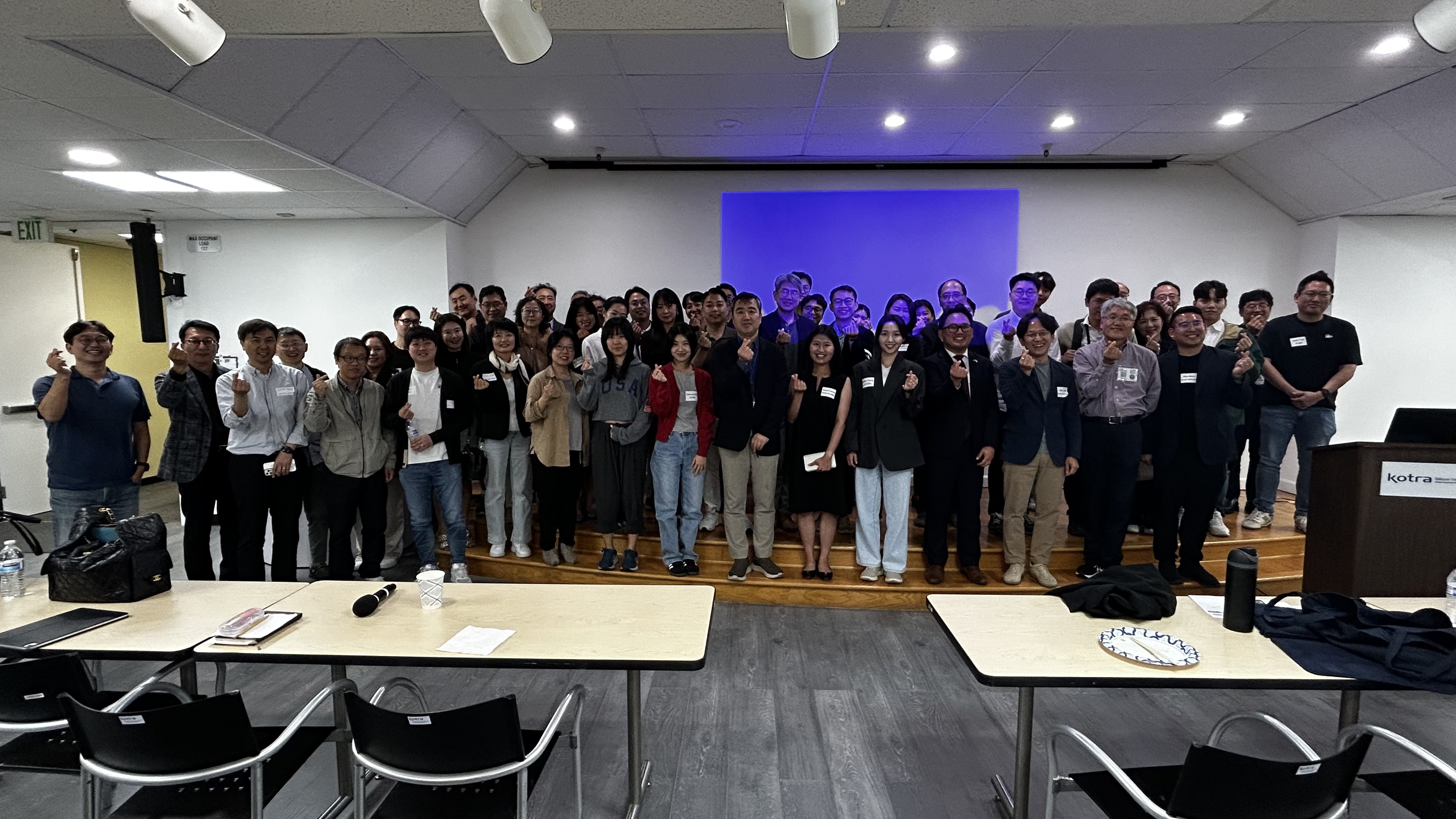
The extraordinary enthusiasm demonstrated by attendees—manifested in the extended networking session that organizers had to actively end—reflects the community’s recognition that K-PAI provides something genuinely valuable and increasingly rare: a venue for substantive, cross-disciplinary dialogue about AI’s real challenges rather than superficial hype. The combination of rigorous technical content, diverse industry perspectives, and genuine community connection creates an environment where meaningful insights emerge and lasting professional relationships form.
Conclusion
The 11th K-PAI Forum marked a pivotal moment in the community’s evolution, establishing institutional foundations that will support its continued growth while tackling one of AI’s most fundamental challenges. The perpetual partnership with KOTRA Silicon Valley represents more than a collaboration agreement—it signals K-PAI’s maturation into a cornerstone institution bridging Korean and Silicon Valley AI communities with staying power and strategic vision.
The evening’s technical content revealed uncomfortable truths about AI’s energy future that demand a more comprehensive response than the community has yet fully embraced. The Forum demonstrated that efficiency gains alone cannot solve the demand explosion (Chung), that renewable energy represents the only viable path to rapid capacity expansion (Jang), that the grid itself requires massive modernization investment (Shin), and that AI can help optimize operations during this transition (Choi). These insights, delivered by speakers combining academic rigor, industry experience, and operational expertise, provided attendees with clear-eyed understanding of both challenges and opportunities.
Yet the Forum also highlighted a critical gap: while hardware efficiency and infrastructure capacity received thorough treatment, fundamental architectural innovation—the potential “third front” in AI’s energy war—deserves equal attention and investment. As I explored in my blog post on MIT-Invented Liquid Neural Networks, alternatives to the Transformer architecture offer the possibility of dramatic energy reductions at the algorithmic level, complementing hardware and infrastructure improvements. The combination of all three approaches—optimizing existing architectures (Chung’s focus), massively expanding renewable capacity (Jang’s vision), and fundamentally reimagining AI architectures (the LNN promise)—represents the most comprehensive path toward sustainable AI scaling.
The Forum’s emphasis on specialized, domain-specific models aligns perfectly with architectural innovation opportunities. Most applications don’t require the full linguistic capabilities of general-purpose LLMs, suggesting natural fit for lighter architectures optimized for specific tasks. Whether medical charting, legal document analysis, or industrial control systems, the future likely belongs to diverse architectural approaches matched to specific domains rather than universal Transformer-based systems for all use cases. This architectural diversity represents not just technical optimization but a sustainability strategy and a democratization opportunity—enabling organizations without hyperscale resources to deploy sophisticated AI within their energy constraints.
Most fundamentally, the Forum demonstrated that AI’s future depends on solving infrastructure challenges with the same creativity and intensity typically reserved for algorithmic innovations. The companies, communities, and countries that recognize this reality and act accordingly—investing in hardware efficiency, capacity expansion, and architectural innovation simultaneously, while building institutional collaborations to coordinate across these domains—will shape the AI-powered future. Those that focus exclusively on software and chips while ignoring electrons, grids, and alternative architectures will find their ambitions constrained by preventable energy shortages.
The mathematical reality is stark and unavoidable: when demand grows 10x while efficiency improves only 2-3x, we need revolutionary approaches on multiple fronts. Hardware optimization alone is insufficient. Infrastructure expansion alone is too slow. Architectural innovation alone lacks deployment ecosystem. But the combination—pursued with urgency and coordinated through partnerships like K-PAI and KOTRA SV—offers genuine hope for sustainable AI scaling.
The atmosphere of enthusiasm and engagement that pervaded the evening—from the historic partnership announcement through the technical presentations to the networking session that refused to end—reflected the community’s recognition that they are participants in something genuinely important. K-PAI has become a venue where Silicon Valley’s AI community confronts real challenges, builds authentic relationships, and charts paths forward through collective wisdom rather than individual assertion. This 11th Forum advanced that mission substantially, setting the stage for continued exploration of how technology and human collaboration can together address the most consequential challenges of our era.
The path forward requires embracing uncomfortable truths: that efficiency gains alone cannot save us, that infrastructure deployment must accelerate beyond historical precedent, and that the Transformer architecture—despite its revolutionary impact—may not be the optimal foundation for AI’s energy-constrained future. Organizations and communities willing to act on these truths, pursuing excellence across all three fronts while building collaborative partnerships to coordinate progress, will define the next era of AI development. The 11th K-PAI Forum provided both the institutional foundation and the intellectual framework to pursue this comprehensive vision.
The 11th K-PAI Forum demonstrated that solving AI’s energy challenge requires simultaneous progress on efficiency and capacity—a two-front war where success depends on both Silicon Valley’s technical innovation and the energy sector’s deployment speed working in unprecedented coordination.
